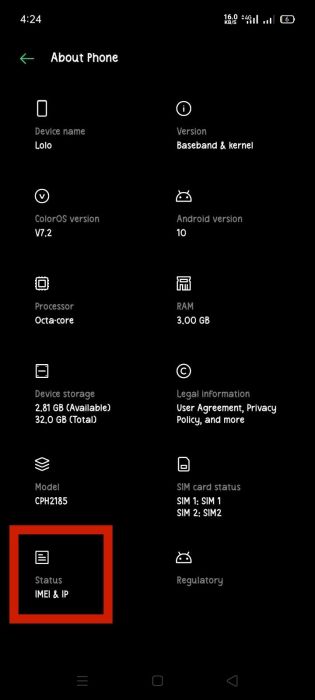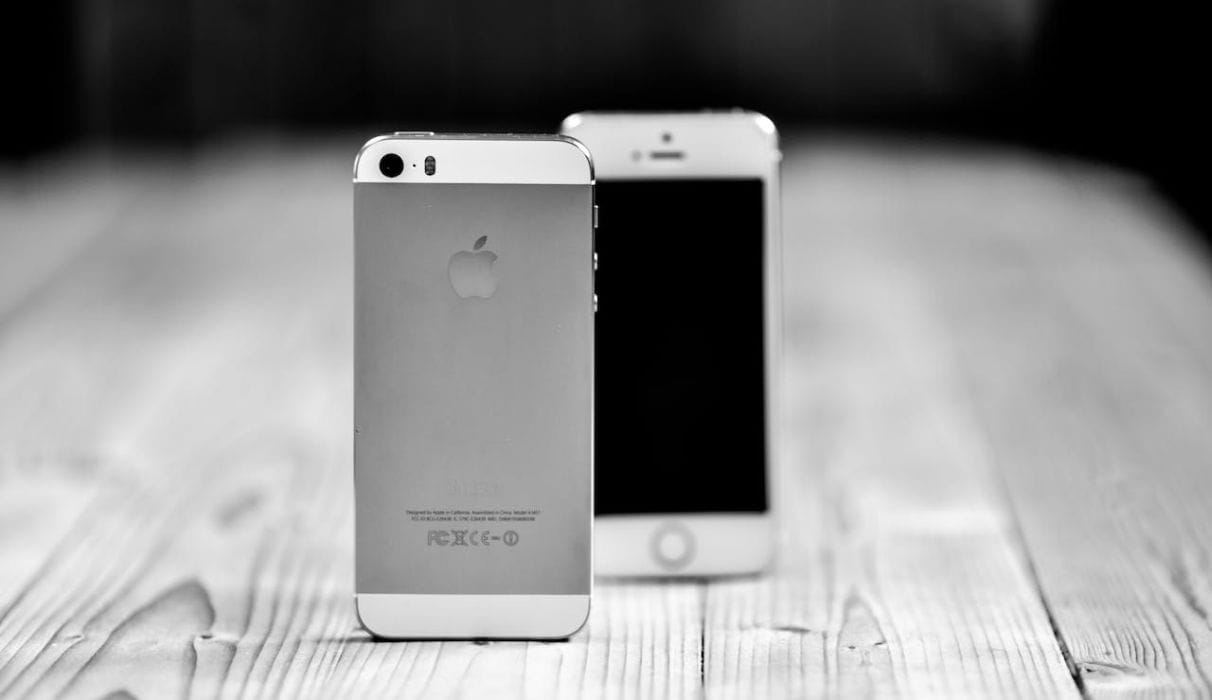Ever wondered if a blacklisted device can be tracked? Perhaps you lost your phone, blacklisted it for security reasons, and now want to track it, or you purchased a blacklisted phone and want to know if the owner or other people can spy on it, or you seek general knowledge on tracking/spying on blacklisted devices. Whatever the case is, this guide has you covered.
Three months ago, I experienced the distress of losing my phone loaded with important information, some of which I didn’t back up. My first line of action beyond the initial despair was to blacklist the phone, rendering it seemingly useless. Then, I sought ways to track it and possibly retrieve it.
Fortunately, I was successful in recovering my lost cellphone, and this sparked a lot of questions from friends/family eager to understand the nuances of tracking blacklisted phones.
In this guide, I’ll tell you my own personal story about this situation, exploring the intricacies of tracking blacklisted devices and providing you with all the answers you’re looking for. Ready? Let’s dive in!
Contents
- 1 Key Takeaways
- 2 Can A BlackListed Phone Be Tracked: The Verdict
- 3 How To Track A Blacklisted Phone
- 4 What To Keep In Mind When Trying To Track A Blacklisted Device
- 5 The Role International Mobile Equipment Identity (IMEI) Number Plays In Tracking Blacklisted Phones
- 6 To What Extent Can A Blacklisted Device Be Spied On?
- 7 What I Do Not Recommend: Giving Out Your IMEI Number Carelessly
- 8 Navigating The Challenges In Tracking Blacklisted Phones
- 9 About The Authors
Key Takeaways
- You can track or spy on a blacklisted device as long as it is turned on and has a SIM card/mobile network connection.
- Consider legal and ethical laws when tracking blacklisted phones.
- IMEI number is instrumental in tracking blacklisted, lost, or stolen phones.
Can A BlackListed Phone Be Tracked: The Verdict

Yes, a blacklisted phone can be tracked when connected to a mobile network, irrespective of the type of SIM card on the phone. The essence of blacklisting is to limit and possibly halt a device’s core functionality, preventing it from accessing a cellular network, sending texts, making calls, or using mobile data. But you can track it with its IMEI number.
The only barriers in tracking a blacklisted device are if the phone is switched off, has no SIM card, or is in a location without network coverage.
This is important to understand because even though blacklisting a phone makes it unusable, it doesn’t prevent someone from spying on your phone. This means that if you have your device in your possession and it’s not stolen or lost, there is no need to blacklist it just to avoid spying. Doing so means you won’t be able to use it at all, which is probably not what you want.
If, like me, your phone was reported lost or stolen, along with your SIM card inside it and loads of important information, you can blacklist it to prevent anyone from tampering with it and then track it later.
How To Track A Blacklisted Phone
Below are a few ways you can track a blacklisted device (whether Android or iOS):
Using In-Built Phone Tracking Options

You can use the “Find My iPhone” option on your iPhone or “Find My Device” on your Android device to trace your blacklisted device. These options are in-built location tracking features for iOS and Android devices, respectively, and they can help you pinpoint the location of your blacklisted mobile phone.
Using Phone Tracking Services
You can track a blacklisted device with any reliable phone tracking service that will use your IMEI number to identify your phone’s location. However, using a phone tracking service can be limiting, as they may only provide you with the phone’s location and not help you recover it.
Phone tracking services do not have the jurisdiction to go after a thief (if your phone was stolen) or allow you to just go anywhere (if you misplaced it) to recover your phone. If you’re only interested in knowing the location of your blacklisted device, then this option works fine. But if, like me, you want to track and recover your blacklisted cellphone, check out the next option.
By Liaising With A Law Enforcement Agency
Going through the hurdle of tracking and recovering your blacklisted, lost, or stolen phone alone can be challenging. So, I highly recommend you report your missing/stolen device to the appropriate law enforcement agency in your area so they can provide you with the necessary assistance.
They have the resources to help you track your blacklisted device and recover it safely. This was the route I took in recovering my blacklisted device and it was quite seamless. All I had to do was reach out to the appropriate authorities and provide them with my ID, SIM card information, phone receipt, and IMEI code to prove ownership, and they got to work!
What To Keep In Mind When Trying To Track A Blacklisted Device

Although it is possible to track a blacklisted device, the process can be challenging. The following are some of the challenges you may encounter:
Legal Constraints
Privacy regulations and international laws set restrictions on the methods and extent to which you can track a cellphone. These regulations can limit how much information you have access to and the tools you can employ. Also, failure to abide by such regulations has legal consequences.
Potential Use Of Evasive Techniques
When a blacklisted device uses an evasive technique like a Virtual Private Network (VPN), tracking the phone becomes more challenging.
When a VPN is enabled, the device’s actual IP address is concealed, creating the impression the device is accessing the internet from a different location.
The Role International Mobile Equipment Identity (IMEI) Number Plays In Tracking Blacklisted Phones

IMEI number is a 15-digit code provided by phone carriers and manufacturers that is unique to every mobile phone. It is also an integral tool for law enforcement agencies and cellular service providers in tracking devices.
Think of it as your phone’s digital footprint. You can find your phone’s IMEI code on the phone’s packaging, in the “Settings” dashboard, or on a white label underneath the battery of your phone.
When a blacklisted device connects to a network, its IMEI is transmitted to the network, allowing the carrier or relevant authorities to identify the device and its location.
My device’s IMEI code was my saving grace! Fortunately, I still had its original packaging, which carried the IMEI code. The law enforcement unit, alongside my mobile network operator, was able to use this code to track my device. If you can’t find your IMEI code without your phone, you can contact your mobile carrier with another phone or visit the store you bought it from with receipts to help you out.
To What Extent Can A Blacklisted Device Be Spied On?
While blacklisting a phone can restrict its core functionalities, it doesn’t necessarily prevent unauthorized access or spying. Here are some key points to consider regarding the potential for spying on a blacklisted device:
- If someone has physical access to your blacklisted, lost/stolen phone, they may still be able to retrieve some data stored on the device, especially if you didn’t secure it with passwords or biometrics. They may also attempt to use sophisticated tools to recover information they can use to spy on you.
- Furthermore, if you had spyware installed on your device before it was blacklisted, it may continue to operate in some capacity, giving hackers leverage to spy on the phone even while it is blacklisted.
What I Do Not Recommend: Giving Out Your IMEI Number Carelessly

Do not give out your device’s IMEI number to just anyone or use it on unverified platforms to avoid risking your privacy and security. People with malicious intentions can use your IMEI number to track you or even clone it to create a duplicate of your phone with the same IMEI number, which can be used to commit fraud.
If you want to track a blacklisted iPhone or Android, it is important to understand the challenges involved – privacy laws and cellular network technicalities.
It is also crucial to be aware of the fine line between legitimate tracking and what could be termed “spying.” Unauthorized tracking of a blacklisted mobile phone can be considered as “spying,” which poses ethical concerns and could lead to legal consequences. So, always ensure you’re acting within the boundaries of the law when tracking a blacklisted device.
Moreover, you don’t have to navigate those challenges alone. Capitalizing on the IMEI number, the device’s unique identifier, and employing the help of a professional or law enforcement personnel can help you recover your device faster and easier. I can testify to this, as I used this method myself, and I hope you get to say the same thing after utilizing the tips I discussed above.
I wish you success in your quest and I hope you found this guide helpful. Do well to share with others to enlighten them.
